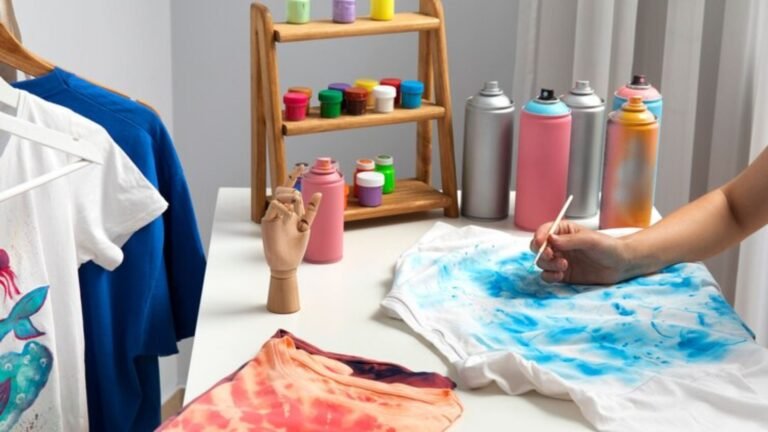Acid dyes are a class of synthetic dyes primarily used for dyeing protein fibers such as wool, silk, and nylon. They are water-soluble and known for their vibrant colors and excellent dyeing properties. This article will delve into the numerous benefits of acid dyes, particularly in the textile industry, while also exploring their applications beyond textiles.
Acid dyes are characterized by their acidic nature and affinity for basic (alkaline) materials. They are typically applied in an acidic dye bath, which helps to facilitate the bonding between the dye molecules and the fiber. Acid dyes are predominantly used for dyeing animal fibers and some synthetic fibers, making them a popular choice in the textile industry. The popularity of acid dyes stems from their ability to provide rich, deep colors and strong performance in various applications.
Benefits of Acid Dyes in Textiles
Acid dyes have revolutionized the textile industry, providing a range of benefits that make them an ideal choice for various dyeing processes.
Vibrant Color Range
One of the most significant advantages of acid dyes is their vibrant color range. Acid dyes are available in a multitude of shades, allowing textile manufacturers and artists to achieve a wide spectrum of colors. From bright yellows and reds to deep blues and greens, acid dyes provide the versatility needed to create stunning fabrics. This extensive color palette makes them suitable for fashion, home textiles, and craft applications.
Excellent Colorfastness
Colorfastness refers to the resistance of a color to fading or bleeding when subjected to washing, light, or other environmental factors. Acid dyes are known for their excellent colorfastness, particularly on protein fibers. This means that textiles dyed with acid dyes can withstand regular washing and exposure to sunlight without losing their vibrancy. The durability of acid dyes contributes to the longevity of the fabric, making it a cost-effective choice for manufacturers.
Ease of Use
Acid dyes are relatively easy to use, making them accessible to both professionals and hobbyists. The dyeing process can be conducted in a home setting or an industrial environment, and the instructions for dyeing with acid dyes are straightforward. Users can achieve consistent results with minimal effort. This ease of use has led to their popularity among DIY enthusiasts, textile artists, and commercial dyeing operations.
Environmental Considerations
With the increasing focus on sustainability in the textile industry, the environmental impact of dyeing processes is under scrutiny. Acid dyes can be more environmentally friendly compared to some other dye types, as they often require less water and produce less wastewater. Additionally, many acid dyes are now available in low-impact formulations, which are designed to minimize environmental harm. This shift towards greener practices aligns with the growing consumer demand for sustainable products.
Applications Beyond Textiles
While acid dyes are predominantly known for their use in textiles, they have several applications beyond this industry.
Leather Dyeing
Acid dyes are commonly used for dyeing leather, providing vibrant colors and excellent penetration into the material. The properties of acid dyes allow for even color distribution, which is essential in leather products like shoes, bags, and jackets. The durability and colorfastness of acid dyes make them a preferred choice among leather artisans and manufacturers.
Food Coloring
In some cases, acid dyes are used as food coloring agents. Although not all acid dyes are safe for consumption, certain food-grade acid dyes can provide vibrant colors to various food products. Their ability to dissolve in water makes them suitable for applications in beverages, candies, and other processed foods. The use of acid dyes in food coloring must adhere to safety regulations to ensure they are safe for consumers.
Biological Staining
Acid dyes also find application in the biological sciences, particularly in staining procedures. They can be used to stain biological specimens for microscopy, providing contrast and visibility for various cellular components. This use is crucial in research and education, where visualizing the structures and functions of cells is necessary.
Conclusion
Acid dyes have established themselves as a vital component in the dyeing industry, offering numerous benefits that cater to the needs of textile manufacturers, artists, and consumers alike. Their vibrant color range, excellent colorfastness, ease of use, and environmental considerations make them an attractive option for various applications. Moreover, their versatility extends beyond textiles, finding roles in leather dyeing, food coloring, and biological staining.
ALSO READ:Ultimate Guide To Columbia Blue: Meaning, Uses, And Style Tips
FAQs
What fibers can be dyed with acid dyes?
Acid dyes are primarily used for dyeing protein fibers such as wool, silk, and nylon. They can also be used on some synthetic fibers that have been treated to accept acidic dyes.
Are acid dyes safe to use?
While many acid dyes are safe to use, it’s essential to follow safety guidelines and manufacturer’s instructions. Some acid dyes may be harmful if ingested or improperly handled.
How can I achieve a specific color using acid dyes?
To achieve a specific color with acid dyes, you can blend different dye colors or adjust the concentration of dye in the dye bath. It’s helpful to perform test samples to ensure the desired result.
Can acid dyes be used for tie-dyeing techniques?
Yes, acid dyes are excellent for tie-dyeing techniques, particularly on protein fibers. The dye’s vibrant colors and ability to penetrate fabric make it suitable for creating unique patterns and designs.
How do I care for textiles dyed with acid dyes?
Textiles dyed with acid dyes should be washed in cold water with a gentle detergent to preserve their colors. Avoid exposing them to direct sunlight for extended periods to prevent fading.

